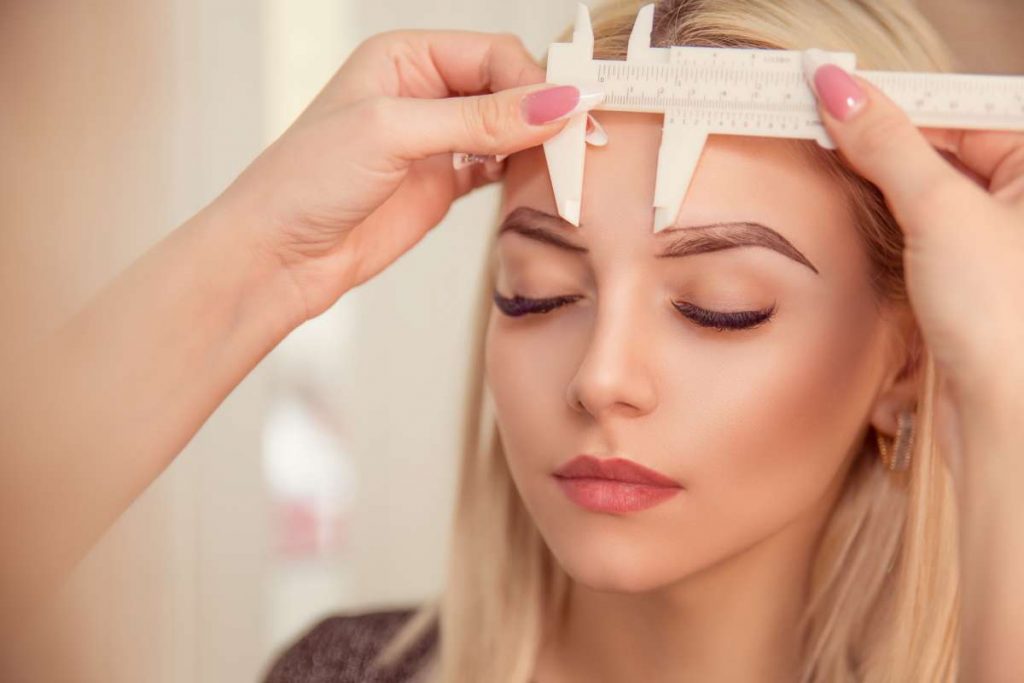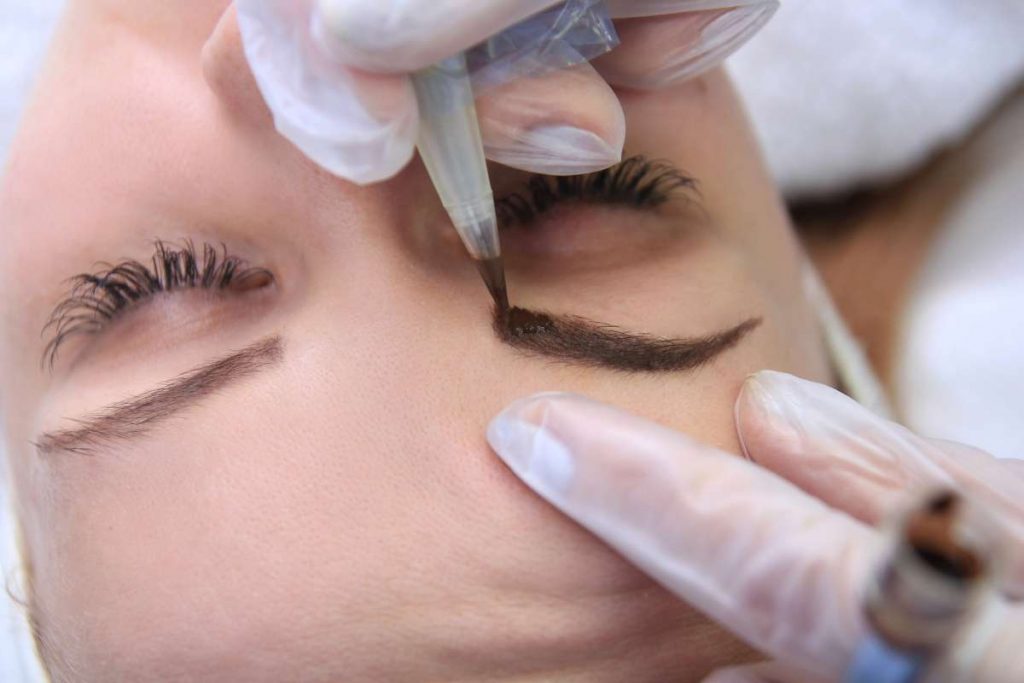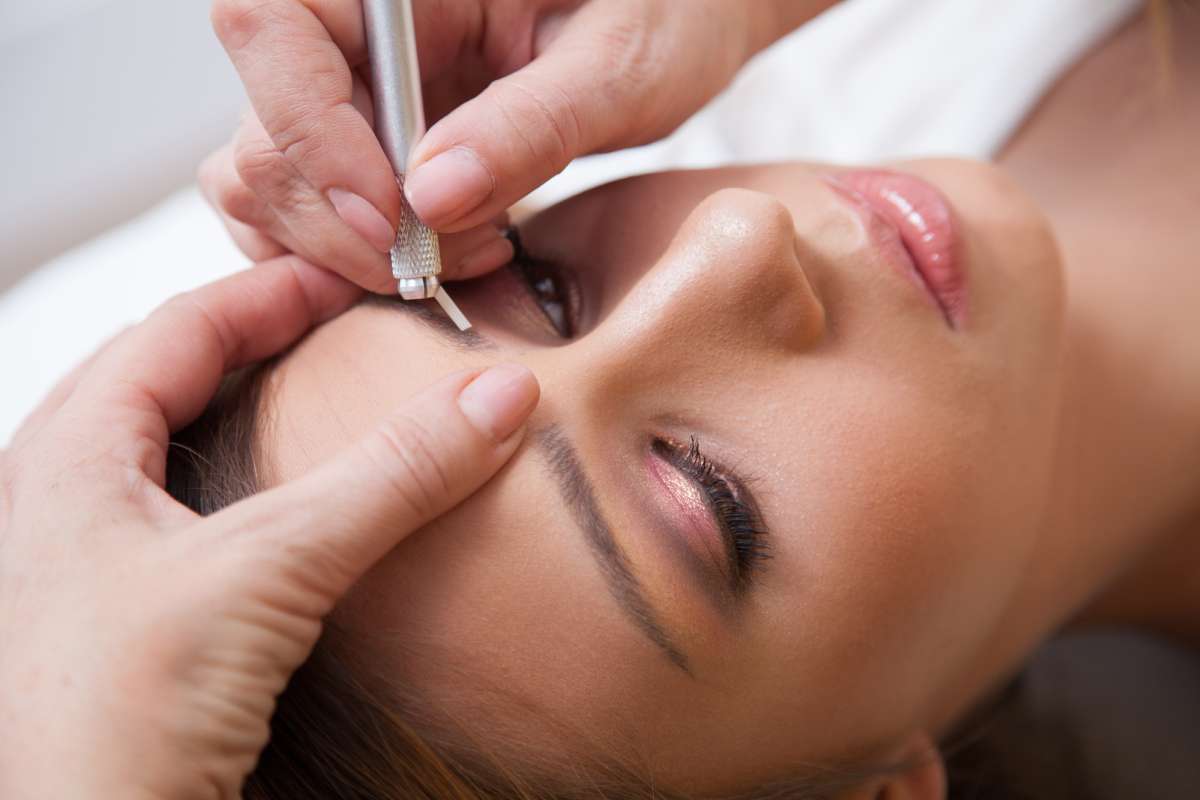Thick and well-groomed eyebrows have become a beauty staple. However, many people struggle with thin or sparse brows that don’t seem to grow back. This issue can be frustrating, especially if you’ve overplucked in the past or are dealing with other factors that affect hair growth.
Understanding the reasons behind your brow hair’s stunted growth can help you find effective solutions. In this article, we’ll cover the causes of eyebrow hair loss and provide suggestions to promote regrowth.
Let’s get straight to the point
If your brow hair isn’t growing, it could be due to several factors, including overplucking, hormonal imbalances (like thyroid issues), nutritional deficiencies, aging, stress, skin conditions, or chemotherapy. Genetics and the natural hair growth cycle also play a role.
To encourage eyebrow regrowth, avoid grooming (plucking/waxing), use growth serums or castor oil, maintain a balanced diet rich in essential nutrients, and manage stress. For a more immediate solution, consider microblading. Adopting healthier habits and treatments can help restore fuller, healthier brows.
Causes Of Brow Hair Loss
There are several reasons why your eyebrow hair might not be growing as expected. These can range from everyday grooming habits to more complex medical conditions. Below, we break down the most common causes.
1. Overplucking And Waxing
One of the most common causes of eyebrow thinning is overplucking or waxing. Regular tweezing, waxing, or threading can damage the hair follicles, making it difficult for brow hair to grow back.
- Hair follicles can become scarred or inactive due to constant trauma.
- Excessive grooming can lead to permanent thinning in some cases, especially if the hair roots are damaged.
While hair removal methods may provide a clean and defined look temporarily, over time, they can reduce the natural growth of your eyebrows.
2. Hormonal Imbalances
Hormonal changes can also have a significant impact on hair growth, including your eyebrows. Thyroid dysfunction, for example, is a major cause of eyebrow thinning. If the outer edges of your eyebrows are thinning, it could be a sign of an underlying thyroid issue.
- Hypothyroidism and hyperthyroidism both affect hair follicles and can slow or stop hair growth altogether.
- Hormonal changes due to pregnancy or menopause may also trigger brow hair loss.
It’s important to get checked for thyroid issues if you notice significant brow thinning, as proper treatment can help restore hair growth.
3. Nutritional Deficiencies
A poor diet can contribute to hair thinning, including the hair on your eyebrows. Hair growth requires a variety of nutrients, including vitamins and minerals, to stay healthy.
- Deficiencies in Vitamin B, Iron, Zinc, and Vitamin D can lead to thinning hair.
- Those with iron-deficiency anaemia or diets lacking in protein may experience eyebrow hair loss.
Ensuring a well-balanced diet rich in vitamins and minerals can help maintain healthy hair growth, including your brows.
4. Ageing
Unfortunately, ageing can also be a major factor behind thinning eyebrows. As we age, hair follicles can slow down or stop producing hair altogether.
- The natural aging process leads to a decrease in hair production, affecting both the scalp and eyebrows.
- Hormonal changes during menopause also contribute to thinning brows as reproductive hormone levels drop.
While ageing is a natural part of life, maintaining a healthy diet and using growth-promoting products can help slow down the thinning process.
5. Stress
Stress can wreak havoc on your body, including your hair growth. When the body is under stress, it prioritises vital functions over hair growth.
- High levels of the stress hormone cortisol can push hair follicles into a resting phase, which results in more hair shedding and slower regrowth.
- Stress also impacts your overall health and nutrition, which are essential for hair growth.
Managing stress through relaxation techniques like meditation or exercise can help improve your overall hair health, including your eyebrows.
6. Skin Conditions
Certain skin conditions can lead to brow hair loss. Conditions like eczema, psoriasis, and seborrheic dermatitis can affect the skin around your eyebrows, leading to irritation, inflammation, and, eventually hair loss.
- These conditions can cause itching and flaking, which can damage the hair follicles over time.
- Consult a dermatologist if you suspect a skin condition is affecting your brow growth, as topical treatments can help alleviate symptoms and protect your follicles.
7. Chemotherapy
Chemotherapy treatments are known to cause hair loss throughout the body, including eyebrows. These medications target rapidly dividing cells, which unfortunately include hair follicles.
- Brow loss due to chemotherapy is temporary, but the regrowth process can take several months after treatment ends.
- Many women turn to brow serums and cosmetic products to help restore brow hair during and after treatment.

How To Encourage Eyebrow Growth?
If you’re looking to promote healthier, thicker eyebrows, there are several steps you can take to encourage regrowth. Below are some effective methods to help boost your brow hair growth.
1. Stop Plucking, Waxing, And Threading
If your goal is to regrow your eyebrows, you’ll need to stop removing the hair. Constant plucking, waxing, or threading damages the hair follicles, making it difficult for them to recover.
- Allow your brows to grow naturally without interference for several weeks to give the hair follicles time to heal.
2. Use Growth-Enhancing Serums
There are a variety of brow growth serums on the market that claim to promote faster, fuller brow growth. While results may vary, these products can be a good option for those looking for a non-invasive solution.
- Look for serums containing ingredients like peptides and biotin, which are known to stimulate hair growth.
3. Apply Castor Oil
Castor oil has been used for many years as a natural remedy for hair loss. Its main ingredient, ricinoleic acid, is believed to promote hair regrowth and improve the condition of your hair follicles.
- Apply castor oil to your brows daily to keep them moisturised and reduce breakage.
4. Maintain A Balanced Diet
A balanced diet rich in proteins, vitamins, and minerals is essential for healthy hair growth. Foods high in biotin, iron, and protein can help support your hair follicles and promote thicker brows.
- Make sure your diet includes dark leafy greens, beans, nuts, and whole grains to ensure proper nutrient intake.
5. Consider Microblading
If natural regrowth is slow or your hair follicles are damaged, microblading can offer a more immediate solution. This semi-permanent cosmetic procedure mimics natural brow hairs by adding tiny strokes of pigment, creating the appearance of fuller eyebrows.
- Microblading typically lasts 1-3 years and can be an excellent option for those seeking a long-term solution.

Factors Affecting Eyebrow Growth
Beyond the common causes of brow hair loss, several factors can influence how quickly or slowly your eyebrow hair grows. Understanding these factors can help you manage and improve your brow care routine.
1. Genetics
Genetics play a significant role in determining the thickness, shape, and growth rate of your eyebrows. If your family has naturally sparse brows, you may find it difficult to achieve thicker eyebrows without cosmetic help.
- While you can’t change your genetic makeup, you can still work with what you have by promoting healthy growth and using eyebrow serums to enhance fullness.
2. Hair Growth Cycle
Like all hair, your eyebrow hair goes through a cycle of growth, rest, and shedding. This cycle consists of three phases:
- Anagen (growth phase): This is when the hair actively grows.
- Catagen (transition phase): The hair follicle begins to shrink.
- Telogen (resting phase): The hair falls out, and the follicle remains dormant before producing new hair.
Not all eyebrow hairs are in the same phase at the same time, which is why you may notice uneven growth. On average, the eyebrow hair growth cycle lasts between 5-7 weeks.
3. Environmental Factors
Environmental factors like the weather can also impact hair growth. Colder, drier climates can lead to dry skin and brittle hair, including your eyebrows.
- During winter months, your brows may appear thinner due to the lack of humidity in the air.
- Warmer, humid climates are more conducive to healthy brow growth, as moisture helps keep skin and hair follicles hydrated.
4. Cosmetic Products And Treatments
Many people rely on cosmetic products to enhance their brows, but some products can actually hinder brow growth. Be mindful of using harsh chemicals near your eyebrows, as certain ingredients can damage the hair follicles.
- Facial moisturisers, especially those with strong active ingredients like retinol or acids, should be kept away from your brow area.
- Products designed specifically for brow care, such as serums and oils, can help support natural growth.
Conclusion
Whether your eyebrows are thinning due to overplucking, hormonal changes, or nutritional deficiencies, there are several steps you can take to promote regrowth. By understanding the causes behind your brow hair loss and adopting healthier grooming and care habits, you can work towards achieving fuller, healthier brows.
Whether you opt for growth serums, natural remedies like castor oil, or cosmetic treatments like microblading, there’s no shortage of options to help your brows thrive.
FAQs About Growing Eyebrows
Why Does My Eyebrow Hair Not Grow?
Causes of hair loss in the eyebrows It is possible that an infection, skin disease, hormonal changes, or an overactive immune system are to blame for the thinning of either one or both of your eyebrows. A thinning of the brows can also be brought on by a lack of proper nutrition, physical or mental damage, or stress.
Why Are My Eyebrows Growing So Slow?
According to dermatologist Sophia Reid, MD, the most common cause of eyebrow hair loss is over-plucking. “When people tweeze, comb, or pluck their eyebrows too much, it causes trauma and inflammation to the hair follicle, which thins and slows the hair growth,” says Dr.
How Can I Regrow My Eyebrows Naturally?
Here are a few simple ingredients you can use at home to encourage the growth of your eyebrows:
- Apply castor oil. Castor oil is a well-known remedy for hair growth.
- Massage with coconut oil.
- Use onion juice.
- Apply aloe vera gel.
- Apply raw milk on your brows.
- Give egg yolk a try.
- Apply jojoba oil.
- Massage with olive oil.
How To Grow Eyebrows In 3 Days?
Castor oil: Castor oil has an essential composition of a chemical, which is useful for hair growth. Gently apply and massage castor oil on each eyebrow for two or three minutes. Leave this on for 30 minutes. Then wash your eyebrows with lukewarm water and a gentle cleanser.
What Oil Thickens Eyebrows?
Clear castor oil, also known as cold-pressed castor oil, and Jamaican black castor oil, also known as pressed from roasted castor seeds, are the two primary varieties of castor oil that are available for use in the eyebrow application process. Both versions include the same active ingredients, which have been shown to stimulate thicker hair growth. It is essential to go with a product that contains just unadulterated castor oil.


